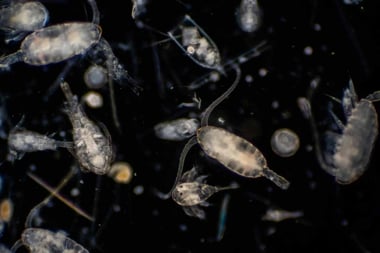Renovation Plans This Spring?
Painting and wallpapering is often viewed as merely a cosmetic affair. The environmental and health issues involved are worth taking seriously, however.
Painting and wallpapering is often viewed as merely a cosmetic affair. The environmental and health issues involved are worth taking seriously, however.
Traditional, heavily odorous paints such as vinyl resins and petrochemical solvents contain ingredients which, when inhaled, can cause a variety of complaints, including lung problems, headaches, and nausea. Chemical-based paints are not only damaging to health, but also to the surrounding environment. Volatile organic compounds (VOCs) found in these paints contribute to ground-level ozone, which forms a major element of smog.
Naturally produced paints match the performance of chemical alternatives, but without harming the environment or user. Formed from only natural products, these paints do not contain emissive compounds or chemicals. They’re also easy to remove without solvents or equally hazardous materials.
Natural paints offer an excellent alternative to vinyl resins and petrochemical solvents. Using natural materials, many of which have been used safely for centuries, natural paints are formulated to give the results we have come to expect from chemically enhanced paints, without unnecessarily exposing ourselves to harm.
Conventional wall coatings seal the room so effectively that we end up living in a plastic box. Builders and architects know how important it is for rooms to breathe; yet many of us daily face the consequences, with paint being pushed off the walls by moisture trying to escape and excessive condensation that leads to mold growth. Natural paints are microporous, allowing moisture to pass through them. This makes them suitable for all types of houses.
Many of us dislike the smell of conventional paints, and, with concern over environmental impact, manufacturers are making their paints less smelly, but at what cost? Sometimes to reduce odours, a cocktail of other chemicals has to be used. Just because a chemical has low odour doesn’t mean it is safe. Indeed, the lack of smell can prove to be more dangerous, as the homeowner may not ventilate the room in the same way if there is little smell; thus vapours can build up.
The environmental impact of manufacturing natural paint is taken extremely seriously. The processing of the raw ingredients is kept to a minimum, and energy efficient processes are employed. Resources, such as plant oils and minerals, which are in plentiful supply, are used to ensure as little impact on the environment as possible.
A key ingredient in most conventional paint stripping products&methylene chloride, or dichloromethane&is known to cause health problems, and is actually considered a class III carcinogen by the European Union. In an attempt to appear both safe and environmentally friendly, many paint removal products substitute methylene chloride with other chemicals, namely benzyl alcohol, n-mythyl pyrrolidone (NMP), or dimethyl sulphoxide. However these substitutes are not harmless, and in some cases are equally hazardous.
Genuine eco-friendly paint removers are not solvent based, and do not contain any caustic or caustic-based elements. With a non-solvent composition, environmentally friendly paint removers emit no harmful VOCs (volatile organic compounds), making them safe for everyday use.
Source: greenconsumerguide.com.
Eco-Friendly Products in Canada
The Environmental Choice Program (ECP), Environment Canada’s eco-labelling program has identified low-VOC surface coatings that include paints, stains, and varnishes. They are distinguished by the fact that they use water as a carrier instead of petroleum-based solvents. As such, the levels of harmful emissions from water-borne surface coatings are significantly lower than solvent-borne surface coatings. These certified coatings also contain very low or no levels of heavy metals and formaldehyde. By choosing water-borne paints, stains, and varnishes that meet Environmental Choice criteria, you will improve the indoor air quality for yourself and your colleagues.
Certification Criteria
- Eco-friendly paints must not be formulated or manufactured with formaldehyde, halogenated, or aromatic solvents or heavy metals such as mercury, lead, cadmium, and chromium.
- They must have a flash point of 61oC (142oF) or greater.
- Paints and stains must not contain VOCs in excess of 200 grams per litre.
- Varnishes must not contain VOCs in excess of 300 g/L.
Shopping Guide
Find eco-friendly paints at:
- Benjamin Moore & Co. Ltd
- BioHemp
- Castle Building Centres
- CBR Products
- Dural (Division of Multibond) Inc.
- Home Hardware Stores Ltd
- ICI Paints (Canada) Inc.
- MICCA Paint Inc.
- Para Paints
- PPG Canada Inc. Architectural Finishes
- SICO Inc.




